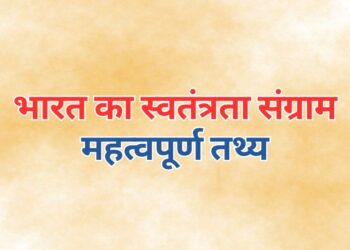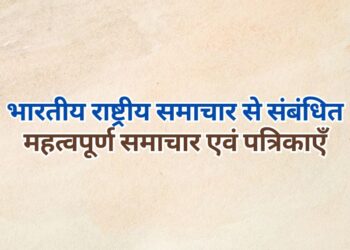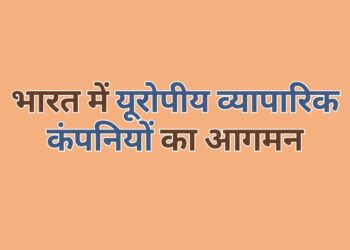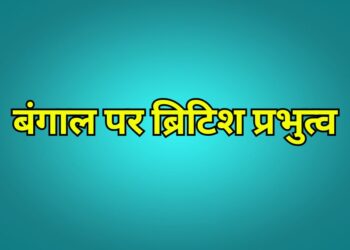भारतीय धार्मिक, सामाजिक और राष्ट्रीय क्रांतियाँ विभिन्न संगठनों और संस्थानों के उद्भव के साथ जुड़ी हुई हैं जिन्होंने भारतीय इतिहास के पाठ्यक्रम को आकार देने में महत्वपूर्ण भूमिका निभाई है। धार्मिक सुधार आंदोलनों से लेकर सामाजिक वकालत समूहों और राष्ट्रवादी संगठनों तक, इन संस्थाओं ने भारतीय समाज और स्वतंत्रता और सामाजिक परिवर्तन की दिशा में इसकी यात्रा पर एक स्थायी प्रभाव छोड़ा है। इन महत्वपूर्ण संगठनों और संस्थानों की खोज के लिए उनकी उत्पत्ति, उद्देश्यों, प्रमुख हस्तियों, योगदान और विरासत की विस्तृत जांच की आवश्यकता होती है।
1. धार्मिक सुधार आन्दोलन:
a. आर्य समाज: 1875 में स्वामी दयानंद सरस्वती द्वारा स्थापित, आर्य समाज का उद्देश्य वैदिक शिक्षाओं को बढ़ावा देना, मूर्ति पूजा का विरोध करना और सामाजिक सुधार की वकालत करना था। इसने एकेश्वरवाद, शिक्षा और सामाजिक समानता पर जोर देते हुए हिंदू धर्म के पुनरुद्धार में महत्वपूर्ण भूमिका निभाई।
b. ब्रह्म समाज: 1828 में राजा राम मोहन रॉय द्वारा स्थापित, ब्रह्म समाज ने हिंदू धर्म के भीतर एकेश्वरवाद, तर्कसंगतता और सामाजिक सुधार पर ध्यान केंद्रित किया। इसने महिलाओं के अधिकारों, सती प्रथा के उन्मूलन और धार्मिक सहिष्णुता जैसे मुद्दों का समर्थन किया और बाद में सुधार आंदोलनों को प्रभावित किया।
c. थियोसोफिकल सोसायटी: 1875 में हेलेना पेत्रोव्ना ब्लावात्स्की, हेनरी स्टील ओल्कोट और विलियम क्वान जज द्वारा स्थापित, थियोसोफिकल सोसायटी ने आध्यात्मिक ज्ञान, सार्वभौमिक भाईचारे और तुलनात्मक धर्मों के अध्ययन को बढ़ावा दिया। इसने विभिन्न धार्मिक पृष्ठभूमि के बुद्धिजीवियों और साधकों को आकर्षित किया।
2. सामाजिक सुधार आंदोलन:
a. प्रार्थना समाज: 1867 में आत्माराम पांडुरंग द्वारा स्थापित, प्रार्थना समाज ने हिंदू धर्म के भीतर धार्मिक और सामाजिक सुधार, महिलाओं की शिक्षा, विधवा पुनर्विवाह और जाति भेद के उन्मूलन की वकालत पर ध्यान केंद्रित किया।
b. सर्वेंट्स ऑफ इंडिया सोसाइटी: 1905 में गोपाल कृष्ण गोखले द्वारा स्थापित, इस संगठन का उद्देश्य सार्वजनिक सेवा, शिक्षा और सामाजिक कल्याण को बढ़ावा देना था। इसने राष्ट्र-निर्माण और सामाजिक उत्थान के लिए प्रतिबद्ध नेताओं को तैयार किया।
c. अखिल भारतीय महिला सम्मेलन (एआईडब्ल्यूसी): 1927 में मार्गरेट कजिन्स और कमलादेवी चट्टोपाध्याय द्वारा स्थापित, एआईडब्ल्यूसी ने महिलाओं के अधिकारों, शिक्षा और सामाजिक सुधारों की वकालत की। इसने लैंगिक असमानताओं को दूर करने और महिला सशक्तिकरण को बढ़ावा देने में महत्वपूर्ण भूमिका निभाई।
3. राष्ट्रवादी और राजनीतिक संगठन:
a. भारतीय राष्ट्रीय कांग्रेस (आईएनसी): 1885 में स्थापित, आईएनसी भारतीय स्व-शासन और ब्रिटिश औपनिवेशिक शासन से स्वतंत्रता की वकालत करने वाला प्रमुख राजनीतिक संगठन बन गया। इसने महात्मा गांधी, जवाहरलाल नेहरू और सरदार पटेल जैसे राष्ट्रवादी नेताओं के लिए एक मंच प्रदान किया।
b. ऑल इंडिया मुस्लिम लीग (एआईएमएल): 1906 में स्थापित, एआईएमएल ने शुरू में मुस्लिम हितों की रक्षा करने की मांग की थी, लेकिन बाद में एक अलग मुस्लिम-बहुल राष्ट्र की मांग में एक प्रमुख खिलाड़ी बन गया, जिसके कारण 1947 में पाकिस्तान का निर्माण हुआ।
c. हिंदुस्तान सोशलिस्ट रिपब्लिकन एसोसिएशन (एचएसआरए): 1928 में भगत सिंह, चंद्रशेखर आज़ाद और सुखदेव थापर जैसे क्रांतिकारियों द्वारा गठित, एचएसआरए ने ब्रिटिश शासन के खिलाफ सशस्त्र संघर्ष सहित क्रांतिकारी तरीकों से पूर्ण स्वतंत्रता की वकालत की।
4. शैक्षणिक और सांस्कृतिक संस्थान:
a. विश्व-भारती विश्वविद्यालय: 1921 में रवीन्द्रनाथ टैगोर द्वारा स्थापित, विश्व-भारती का उद्देश्य पूर्वी और पश्चिमी शिक्षा को एकीकृत करना, रचनात्मकता को बढ़ावा देना और सांस्कृतिक आदान-प्रदान को बढ़ावा देना था। यह कलात्मक, साहित्यिक और बौद्धिक गतिविधियों का केंद्र बन गया।
b. भारतीय सांस्कृतिक संबंध परिषद (आईसीसीआर): 1950 में स्थापित, आईसीसीआर कला, शिक्षा और सांस्कृतिक आदान-प्रदान के माध्यम से सांस्कृतिक कूटनीति, अंतर्राष्ट्रीय समझ और सहयोग को बढ़ावा देता है। यह भारत की सांस्कृतिक विरासत को विश्व स्तर पर प्रदर्शित करने में महत्वपूर्ण भूमिका निभाता है।
c. राष्ट्रीय शैक्षिक अनुसंधान और प्रशिक्षण परिषद (एनसीईआरटी): 1961 में स्थापित, एनसीईआरटी शैक्षिक अनुसंधान, पाठ्यक्रम विकास और शिक्षक प्रशिक्षण पर केंद्रित है। यह भारत की शैक्षिक नीतियों और मानकों को आकार देने में महत्वपूर्ण भूमिका निभाता है।
5. क्रांतिकारी आंदोलन:
a. ग़दर पार्टी: 1913 में उत्तरी अमेरिका में भारतीय राष्ट्रवादियों द्वारा गठित, ग़दर पार्टी का उद्देश्य सशस्त्र संघर्ष के माध्यम से ब्रिटिश शासन को उखाड़ फेंकना था। इसने भारतीय प्रवासियों के बीच समर्थन जुटाने और क्रांतिकारी गतिविधियों के आयोजन में महत्वपूर्ण भूमिका निभाई।
b. हिंदुस्तान सोशलिस्ट रिपब्लिकन आर्मी (एचएसआरए): एचएसआरए की एक शाखा, एचएसआरए ने भारत में एक समाजवादी गणराज्य स्थापित करने की मांग की और ब्रिटिश अधिकारियों के खिलाफ क्रांतिकारी गतिविधियों में शामिल हो गई, जिसमें भगत सिंह और उनके साथियों से जुड़ा प्रसिद्ध लाहौर षड्यंत्र केस भी शामिल था।
c. अनुशीलन समिति: 1902 में स्थापित, अनुशीलन समिति एक गुप्त समाज थी जो ब्रिटिश शासन के खिलाफ सशस्त्र प्रतिरोध की वकालत करती थी। यह मुख्य रूप से बंगाल में संचालित हुआ और बाद के क्रांतिकारी आंदोलनों को प्रेरित करने में भूमिका निभाई।
6. महिला संगठन और आंदोलन:
a. अखिल भारतीय महिला सम्मेलन (एआईडब्ल्यूसी): जैसा कि पहले उल्लेख किया गया है, एआईडब्ल्यूसी ने महिलाओं के अधिकारों, शिक्षा और सामाजिक सुधारों की वकालत करने, बाल विवाह, दहेज प्रणाली और महिलाओं के लिए राजनीतिक प्रतिनिधित्व जैसे मुद्दों को संबोधित करने में महत्वपूर्ण भूमिका निभाई।
b. महिला भारतीय संघ (डब्ल्यूआईए): 1917 में एनी बेसेंट और मार्गरेट कजिन्स द्वारा स्थापित, डब्ल्यूआईए ने महिला सशक्तिकरण, शिक्षा और सामाजिक सुधार पर ध्यान केंद्रित किया। इसने महिलाओं को सार्वजनिक जीवन में शामिल होने और राष्ट्रवादी आंदोलन में योगदान देने के लिए एक मंच प्रदान किया।
c. आत्म-सम्मान आंदोलन: पेरियार ई.वी. द्वारा शुरू किया गया। रामासामी ने 1920 के दशक में आत्म-सम्मान आंदोलन का उद्देश्य सामाजिक पदानुक्रम, जातिगत भेदभाव और अंधविश्वासों को चुनौती देना था। इसने हाशिए पर रहने वाले समुदायों के बीच तर्कवाद, सामाजिक समानता और आत्म-सम्मान को बढ़ावा दिया।
7. ट्रेड यूनियन और श्रमिक आंदोलन:
a. ऑल इंडिया ट्रेड यूनियन कांग्रेस (एआईटीयूसी): 1920 में स्थापित, एआईटीयूसी भारत में सबसे बड़े ट्रेड यूनियन फेडरेशनों में से एक बन गया, जो श्रमिकों के अधिकारों, उचित वेतन और बेहतर कामकाजी परिस्थितियों की वकालत करता है। इसने श्रमिक आंदोलन और श्रमिक सशक्तिकरण में महत्वपूर्ण भूमिका निभाई।
b. हिंद मजदूर सभा (एचएमएस): 1948 में स्थापित, एचएमएस श्रम अधिकारों, सामाजिक न्याय और आर्थिक समानता पर ध्यान केंद्रित करते हुए विभिन्न क्षेत्रों में श्रमिकों के हितों का प्रतिनिधित्व करता है। यह श्रमिकों के कल्याण और सामाजिक सुधारों की वकालत करने में सक्रिय है।
c. अखिल भारतीय किसान सभा (एआईकेएस): 1936 में स्थापित, एआईकेएस एक प्रमुख किसान संगठन है जो कृषि मुद्दों, भूमि सुधार, ग्रामीण विकास और किसानों के अधिकारों को संबोधित करता है। यह किसानों और कृषि श्रमिकों की चिंताओं को व्यक्त करने में सहायक रहा है।
8. स्वतंत्रता के बाद की संस्थाएँ:
a. भारत का योजना आयोग: 1950 में स्थापित, योजना आयोग (2015 में नीति आयोग द्वारा प्रतिस्थापित) ने भारत की सामाजिक-आर्थिक प्रगति के लिए आर्थिक योजनाओं, नीतियों और विकास रणनीतियों को तैयार करने और लागू करने में महत्वपूर्ण भूमिका निभाई।
b. भारतीय चुनाव आयोग (ईसीआई): 1950 में गठित, ईसीआई विभिन्न स्तरों पर स्वतंत्र और निष्पक्ष चुनाव कराने, चुनावी अखंडता सुनिश्चित करने और भारत की राजनीतिक प्रक्रियाओं में लोकतांत्रिक सिद्धांतों को बनाए रखने के लिए जिम्मेदार है।
c. राष्ट्रीय मानवाधिकार आयोग (एनएचआरसी): 1993 में स्थापित, एनएचआरसी मानवाधिकार उल्लंघनों की जांच करता है और उनका समाधान करता है, जागरूकता को बढ़ावा देता है और पूरे भारत में मानवाधिकारों की सुरक्षा की वकालत करता है।
निष्कर्षतः, भारत की धार्मिक, सामाजिक और राष्ट्रीय क्रांतियों से संबंधित संगठन और संस्थान देश के इतिहास, पहचान और प्रक्षेप पथ को आकार देने में विविध, गतिशील और सहायक रहे हैं। आध्यात्मिक नवीनीकरण की वकालत करने वाले धार्मिक सुधार आंदोलनों से लेकर स्वतंत्रता और सामाजिक न्याय की वकालत करने वाले राष्ट्रवादी संगठनों तक, इन संस्थाओं ने एक स्थायी विरासत छोड़ी है और भारत की विकास और प्रगति की चल रही यात्रा को प्रभावित करना जारी रखा है।














